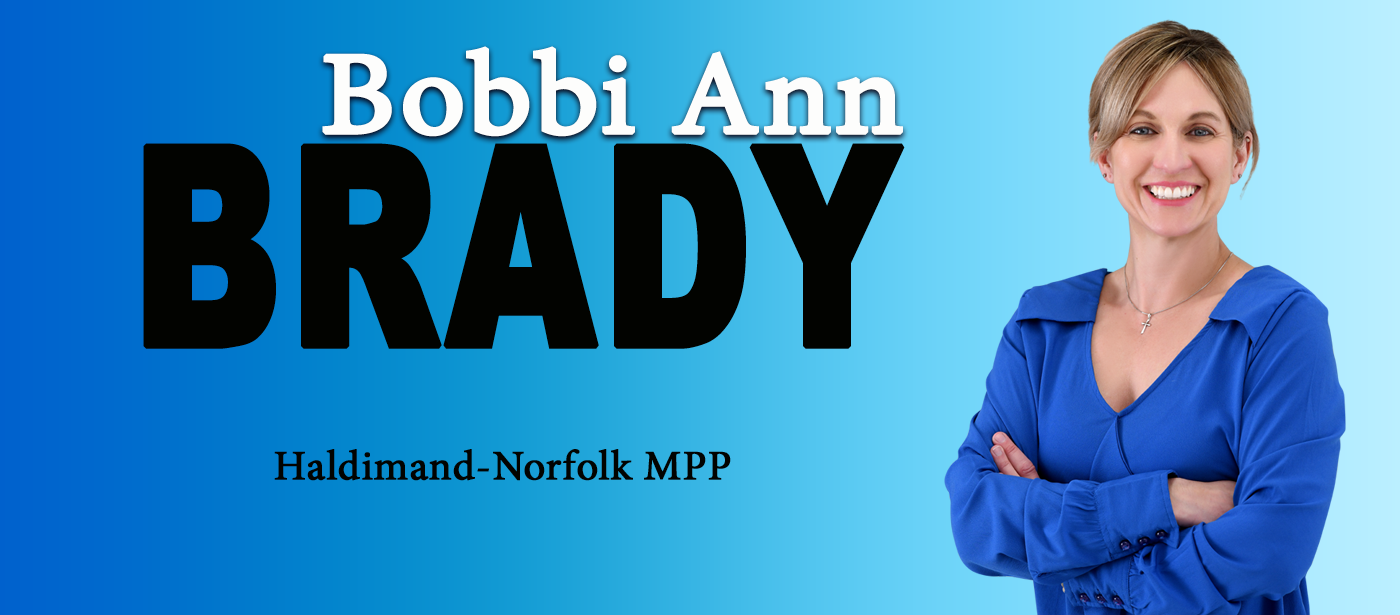By MPP Bobbi Ann Brady
Ontario, and Canada, are currently in the middle of a housing crisis.
The crisis was caused by supply and demand problems, supply chain issues and wide variations in interest rates.
The solution from the Ontario government was Bill 23, the Build More Homes Faster Act. The goal of this bold legislation is to build 1.5 million homes in 10 years. The problem is along the way it removes power from conservation authorities, imposes quotas for home construction on municipalities, amendments to the Ontario Wetland Evaluation system, Planning Act changes, removal of areas from the Greenbelt and could actually increase costs to municipalities.
The bill takes away the ability of municipalities to enter into agreements with conservation authorities for review and comments on development applications. Municipal staff, though, generally don’t have the expertise to provide technical advice on natural hazards to avoid flooding, erosion, and drought impacts. More importantly, the legislation could impact the need for development permits in areas related to flooding, which is one of the reasons conservation authorities were formed.
Another contentious Bill 23 issue has been the proposal to remove 7,400 acres from the Greenbelt. Many constituents are not buying the government’s official line that Greenbelt lands are needed for housing. Many are arguing there is already more greenfield land already allocated for development and still sitting unbuilt than what is required to meet the province’s long range housing goals.
Any time municipalities gain additional responsibilities, or are no longer able to use contractors, it comes at a cost. Many municipalities have written the government objecting to many of the provisions of Bill 23. The City of London, for instance, estimates the impacts of Bill 23 at more than $97 million over five years. I haven’t heard any local figures yet, but imagine they are crunching numbers.
One of my primary concerns is the loss of farmland to housing. Keeping farmland as farmland to feed ourselves is critical. It’s a “no-brainer” so to speak. The government continues to talk about newcomers making Ontario home but if we can’t feed them, it becomes a moot point. We lose nearly 320 acres of arable land daily to development—if there’s one thing we can’t make more of, it’s farm land.
All that being said, I get we need housing.
Years of municipal and provincial red tape left sensible housing development moving at a snail’s pace. The pressure to build housing from the Greater Toronto Area can’t be denied. That pressure is being felt all the way to Haldimand-Norfolk.
From my work at Queen’s Park in Toronto, I have been able to see opportunities to build more livable housing right in the city of Toronto. My Toronto staff have pointed out vast areas of the city where two-story non-historic buildings run for kilometres and could be replaced with European-style five storey buildings with street-level retail.
Everything in Bill 23 isn’t bad. It does tackle some red tape in the Planning Act that could be streamlined. It does recognize there is a housing problem, even though it went too far to tackle it.
There’s a lot to unpack with Bill 23. But rest assured, I will continue to press the government to find ways to build homes while protecting our precious farmland.
Bobbi Ann Brady is the MPP for Haldimand-Norfolk.
